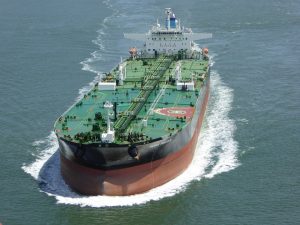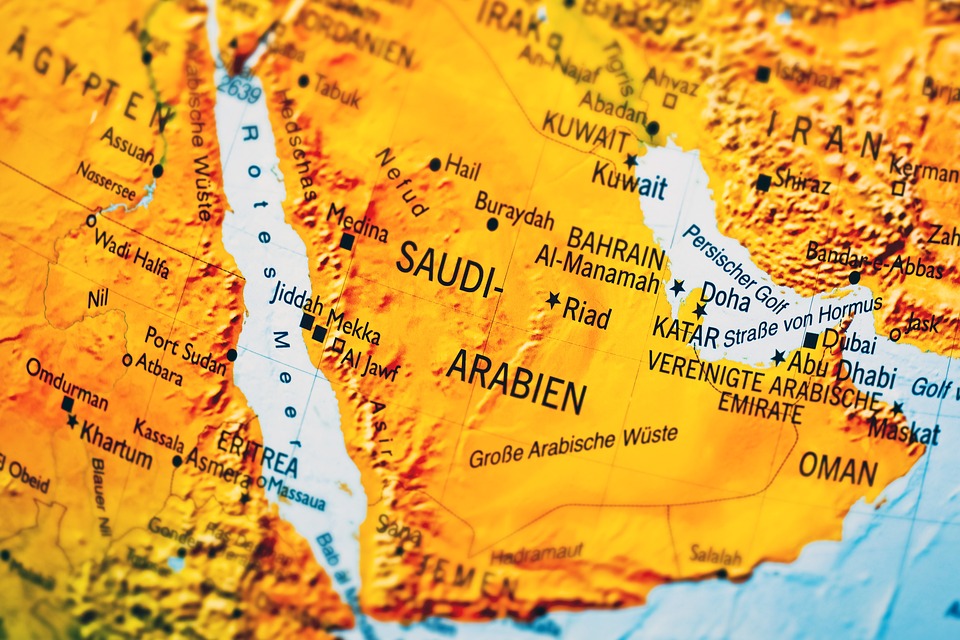De Faakto Intelligence Research Observatory
Sabotage of Commercial Ships in the Gulf of Oman-Strait of Hormuz-An Open Source Intelligence Study
Methodology–OSINT research
Situation- Sabotage of Four Commercial Vessels in The Gulf of Oman-Strait of Hormuz
Background & Analysis
In early May 2019, United Arab Emirates (UAE) reported four commercial vessels were sabotaged near its territorial waters in the Gulf of Oman and the Strait of Hormuz. Few details of the attack or accounts of damage to the vessels have been released. Information about the attack is difficult to corroborate. The influential Lloyds List Maritime Intelligence, criticized the authorities for “scant” information. The U.S. Navy and the Department of Defense have condemned the attacks and are formally accusing Iran of carrying out the sabotage. The attacks are likely the result of the U.S. withdrawing from a 2015 international nuclear deal with Iran and the Trump Administration imposing sanctions on Iranian oil, in an attempt to cut Iran’s crude exports to zero. Iran says it will not let its oil exports to be halted. The strait is a vital global oil and gas shipping route. The majority of crude oil exported from Saudi Arabia, Iran, the UAE, Kuwait and Iraq is shipped through the waterway, one million barrels of oil per day or one fifth of global oil consumption moves through the Strait of Hormuz. The U.S. Navy, Fifth Fleet, based in Bahrain, is tasked with protecting the commercial ships in the area, and while the presence of the U.S. Fifth Fleet should ensure that the critical waterway remains open, provocative Iranian military manoeuvres are likely to escalate tensions in the region.
What Happened?
- Four Commercial vessels were sabotaged near a tanker refuelling hub in the United Arab Emirates (UAE) as per reports from the UAE Foreign Ministry
- U.S. investigators reportedly believe Iran or groups it supports used explosives to damage the ships – but no evidence has emerged to show that Iran was involved (BBC, 2019)
- The ships were sabotaged close to the Strait of Hormuz in the Gulf of Oman near UAE Territorial waters
- No injuries took place
- Few details of the damage to the vessels have been released (Financial Times, 2019)
- A sizable oil slick developed in waters where the tankers were damaged (BBC, 2019)
- The influential Lloyds List Maritime Intelligence criticized the authorities for “scant” information (BBC, 2019)
What Vessels Were Damaged?
According to the BBC via a Reuters report,
At least two ships have holes in their sides due to the impact of a weapon-thought to be explosives (BBC, 2019)
- The Amjad-Saudi tanker-damage suspected oil leak from engines
- Al Marzoqah-Saudi tanker-extent of damage unknown
- A Michel-UAE-flagged bunker vessel-extent of damage unknown
- Andrea Victory-Norwegian tanker-extent of damage unknown-a photo from BBC news shows a hole in the waterline at the stern (BBC, 2019)
According to recent reports from maritime publication Splash247,
- It is believed limpet mines were used in the tanker attacks, which punctured holes in the stern of each vessel below the waterline (Splash247, 2019)
Why Were These Vessels Targeted?
- It is unknown exactly why any of the vessels were targeted, however at least one of the vessels was on the way to being loaded with Saudi crude oil that was to be delivered to Saudi Aramco’s customers in the United States (BBC, 2019)
Where Did the Sabotage Take Place?
- The ships suffered damage while anchored outside the port of Fujairah (BBC, 2019)
- The ships were sabotaged in proximity to one of the world’s largest bunkering (fuelling) hubs, Fujairah emirate, close to the Strait of Hormuz in the Gulf of Oman near UAE Territorial waters (Financial Times, 2019) (Haaretz, 2019)
- Fujairah’s port is about 140 kilometers (85 miles) south of the Strait of Hormuz, the narrow mouth of the Persian Gulf (Haaretz, 2019)
What is The Strait of Hormuz?
- The Strait of Hormuz is a waterway that separates Iran and Oman, linking the Gulf of Oman with the Persian Gulf and the Arabian Sea
- The Strait is 21 miles (33 km) wide at its narrowest point, but the shipping lane is just two miles (three km) wide in either direction (Haaretz, 2019)

Who is Responsible for these Sabotage Attacks?
- UAE Foreign Ministry has not assigned responsibility to any entities at this time (Financial Times, 2019)
- The United States Department of Defense has formally accused Iran of carrying out the attack on four oil tankers
- U.S. officials have previously indicated that American investigators believe Iran was the likely culprit in the attack; a Dept. of Defense statement issued confirms that assessment (Maritime Executive, 2019)
- Splash247 recently reported the United States Rear Admiral Michael Gilday, the director of the Joint Staff in Washington, accused Iran’s Revolutionary Guards (IRGC) of being directly responsible for the tanker attacks (Splash247, 2019)
Why are these Sabotage Attacks Happening?
- The U.S. has imposed tighter sanctions on Iran’s crude exports (Financial Times, 2019)
- Since withdrawing from a 2015 international nuclear deal between Tehran and world powers, the Trump Administration has put pressure on Iran with oil sanctions, eliminating waivers that allowed some countries to buy Iranian oil in an attempt to cut crude exports to zero (Reuters, 2019)
- Iran says it will not let its oil exports be halted (Financial Times, 2019)
- According to U.S. Navy Vice Adm. Mike Gilday, the director of the Joint Staff; Iran has repeatedly threatened to close the strait in case of a military confrontation with the U.S. “Iranian leaders have publicly threatened to close the Strait of Hormuz; they have backed up those threats with actions, posturing their forces in an effort to intimidate the movement of international trade and energy sources.” (Maritime Executive, 2019)
Why Does the Strait of Hormuz Matter?
- The Strait of Hormuz, is a vital global oil and gas shipping route (Reuters, 2019)
- The Majority of crude oil exported from Saudi Arabia, Iran, the UAE, Kuwait and Iraq is shipped through this waterway (Haaretz, 2019)
- Qatar is the world’s biggest producer and exporter of liquefied natural gas-nearly all of Qatar’s liquefied natural gas is shipped via the Strait of Hormuz (Haaretz, 2019)
- 100 million barrels of oil per day or one fifth of global oil consumption moves through the Strait of Hormuz (Haaretz, 2019)
Are There Alternative Routes to Transport Oil in Region?
- The UAE and Saudi Arabia have sought to find other routes to bypass the Strait; including building more oil pipelines (Haaretz, 2019)

Resources
Four Ships Sabotaged at UAE Port-Financial Times (2019) https://www.ft.com/content/77557d4e-74e9-11e9-be7d-6d846537acab
Sabotaged Tanker in Gulf of Oman Leaked Oil-BBC (2019) https://www.bbc.com/news/science-environment-48387033
Four Ships Sabotaged in the Gulf of Oman Amid Tensions-BBC (2019) https://www.bbc.com/news/world-middle-east-48245204
US ‘blames Iran’ for damage to tankers in Gulf of Oman-BBC (2019) https://www.bbc.com/news/world-middle-east-48264499
U.S. Says Iranian Limpet Mines Used Were Used in Fujairah Tanker Attacks-Splash247.com (2019) https://splash247.com/category/region/middle-east/
Strait of Hormuz: UAE ‘Sabotage Attack’ Puts Focus on the World’s Most Important Oil Artery-Haaretz & Reuters (2019) https://www.haaretz.com/us-news/strait-of-hormuz-uae-sabotage-attack-puts-focus-on-world-s-key-oil-artery-1.7226823
U.S. Accuses Iran of Carrying Out Fujairah Attacks-The Maritime Executive (2019) https://www.maritime-executive.com/article/u-s-accuses-iran-of-carrying-out-fujairah-attacks
UAE Says Four Vessels Subjected to Sabotage Near Fujairah Port-Reuters (2019) https://www.reuters.com/article/us-emirates-fujairah-port-shipping/uae-says-four-vessels-subjected-to-sabotage-near-fujairah-port-idUSKCN1SI0EG






